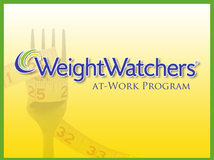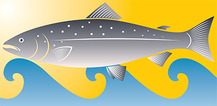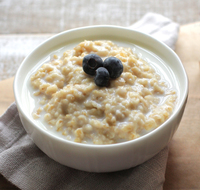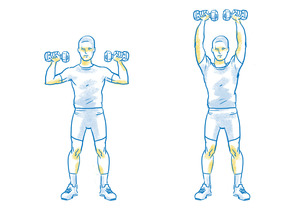September 2017 | #61
 One in 3
children in the United States is overweight or obese. Childhood obesity puts
kids at risk for health problems that were once seen only in adults, like type
2 diabetes, high blood pressure, and heart disease.
The good news
is that childhood obesity can be prevented. In honor of National Childhood
Obesity Awareness Month, AlaskaCare and Active Health Management encourages
your family to make healthy changes together.
-
Get active outside: Walk around the
neighborhood, go on a bike ride, or play basketball at the park.
-
Limit screen time: Keep screen time (time spent
on the computer, watching TV, or playing video games) to 2 hours or less a day.
-
Make healthy meals: Buy and serve more
vegetables, fruits, and whole-grain foods.
-
Taking small steps as a family can help your
child stay at a healthy weight.
Make a difference for kids—spread
the word about strategies for preventing childhood obesity and encourage
communities, organizations, families, and individuals to get involved. Become
a partner of We Can! (Ways to Enhance Children’s Activity & Nutrition),
a national movement helping children ages 8 to 13 stay at a healthy weight. Four of the National Institutes of Health have come
together to bring you We Can! The National Heart, Lung, and
Blood Institute, the National Institute of Diabetes and Digestive and Kidney Diseases, the Eunice Kennedy Shriver National Institute of Child Health and Human Development, and the National Cancer Institute have combined their unique resources and activities to
make We Can! a national success.
We Can! Energize our families: Check out the Parent
Program, which includes
activities that help parents encourage a healthy weight in their family.
Your AlaskaCare Employee Health Plan provides prevention
services for children that may be at risk for obesity. You may review these
benefits on page
44 of your plan booklet.
A recommendation of treatment is not
a guarantee of coverage. Prior to getting care always consult your AlaskaCare
Health Plan Benefit Summary or contact the Aetna Concierge at (855) 784-8646.
|

Make healthy choices at home so you feel your best when you are at work,
vacationing, or outside the house. A few benefits you might see from creating
healthy habits are increased energy, enhanced mood, improved brain function,
and weight maintenance. Live a healthy lifestyle by eating a nutritious diet,
adding physical activity, managing your stress and sleeping well.
Eat a healthy
diet:
- Prep your
meals when you get home from the grocery store. Cook your meat and pre-chop
fruits and vegetables for quick and easy meals during the week.
-
Put fresh
fruit like grapes, apples, and oranges on the counter for easy access.
Be active:
-
Walk in place
or use elastic exercise bands while watching your favorite TV shows. Do squats,
crunches, and lunges during commercial breaks.
-
Find an activity
you enjoy! Garden, hike, swim, or dance to be more active.
Manage
stress:
- Set aside
time for reading, listening to music, or practicing relaxation techniques.
-
Use
progressive muscle relaxation. Try relaxing every muscle in your body. Start
with your toes and end with the top of your head.
Sleep well:
- Turn off all
electronics, like TV, computers, and smartphones at least one hour before bed.
-
Keep your
room cool, dark, and quiet. Use white noise or a fan to block out noises around
the house.
Source: CDC, Physical
Activity and Health
Back to top
|

With the
school year back in full swing, many families make routines work for them by
making lunches the night before, reading or studying nightly, or getting active
for 30 minutes before dinner.
Some
tips for a healthy eating routine:
Eat together
as a family as often as possible. Keep meals pleasant and positive. Don’t
comment about the amount or type of food your child eats. Kids will be less
accepting of new or different foods when they feel pressured to eat.
-
Make healthy
food choices for your family’s meals. Kids notice the choices you make and
follow your lead.
- Make meal
times consistent. Eat at around the same times every day and always at the
table, even for snacks.
- Have meals
often enough (e.g., about every 3 hours for toddlers) that you don’t get too
hungry.
-
Do nothing
else during the meal other than talking and enjoying each other. Turn off
devices and TVs.
Having routines can help you feel
prepared and engaged. Family meals and regular exercise can inspire healthy
habits for life. What new routine will you include for your family?
Use the “If/Then” technique to make
healthy choices a habit
Use the power
of your routine to make your healthy habits stick. Try using the “if/then”
technique. The “if” is a situation that happens to you often. The “then”
describes a planned response to that situation.
Let’s put the
“if/then” technique to use.
-
Healthy Habit: Eat more fruits and
vegetables
“IF I buy fresh produce, THEN
I will pre-wash it for an easy and healthy snack.”
-
Healthy Habit: Increase physical
activity
“IF I watch a television show, THEN
I will walk in place during the show.”
Sources:
Committee
on Nutrition, American Academy of Pediatrics (2003, reaffirmed 2006). Policy
statement: Prevention of pediatric overweight and obesity. Pediatrics, 112(2):
424–430.
Committee
on Nutrition, American Academy of Pediatrics (2001, reaffirmed 2006). The use
and misuse of fruit juice in pediatrics. Pediatrics, 107(5): 1210–1213. Also
available online at http://pediatrics.aappublications.org/content/107/5/1210.full.
NYU
Scholars, Implementation intentions: Strong effects of simple plans
Back to top
|
A
straightforward way to start—teach by example. Here are some important health
practices to encourage at home, and simple ways to help you get everyone in
your family off to a good start.
View schedule…
Back to top
 Don’t miss the 2017 AlaskaCare
health fairs! A variety of health screenings are offered to employee and
retiree AlaskaCare health plan members, age 18 and older. See dates and
locations below, and keep an eye out for reminders about upcoming events in
your area. Pre-registration is required.
-
Fairbanks:
September 23-24, 8 a.m. to 12 noon, Carlson Center
- Anchorage: October
7-8 and 14-15, 8 a.m. to 12 noon, Ted Stevens Int’l Airport
- Juneau: October 21-22,
8 a.m. to 12 noon, Centennial Hall
Learn more and register.
The Numbers – What are they for
and what exactly do they mean?
Blood tests, sometimes called
blood panels, allow a doctor to see a detailed analysis of any disease markers,
the nutrients and waste products in your blood, and how various organs (e.g.,
kidneys and liver) are functioning. Do you need help to decipher the cryptic
language of your routine lab test results?
The Active Health Management
Wellness Team will provide free confidential interpretation and health coaching
for employees covered by AlaskaCare Employee health plan. To speak with a
health coach, call toll-free at (877) 749-6995 Monday- Friday, 5 a.m. to 5 p.m.,
AKST, and Saturday, 5 a.m. to 10 a.m., AKST, or visit MyActiveHealth.com/AlaskaCare.
Tests available at the
2017 health fairs
Back to top
|
 |
|
Weight
Watchers has helped more than 25 million people worldwide achieve their weight
loss goals. If you are interested in starting Weight Watchers meetings at your
work site, contact Cindy during regular business hours at (651) 697-6550, or email her
anytime. Learn more about WW@W
at AlaskaCare.gov.
Back to top
|
 Vitamin D is
important for strong bones and may contribute to overall good health. Alaskans
should select foods that are high in vitamin D, such as Alaska salmon, and
should talk with their health care provider about vitamin D and the risks and
benefits of supplementation.
Back to top
|
 Maybe you’ve had your eye on some new running shoes—they could be yours if you win! Log in to MyActiveHealth.com/AlaskaCare
and complete a Digital Coaching module (reported in Heart Beats). Each
time you complete Heart Beats of Digital Coaching, you get another
chance to win. Choose from almost 200 category topics and start working
towards your personal health goals today with Digital Coaching—available
24 hours per day!
Back to top
|

Overnight soaking cuts down on prep time in the morning
so you can enjoy a healthy and hearty cooked breakfast, even after hitting the
snooze button. Get the recipe…
Source: USDA, What's Cooking?
Back to top
|
The overhead press works the deltoids, which are the main muscles of the shoulders.
This exercise can be performed on a stability ball, seated on a bench, or standing (shown).
Try it out...
Back to top
|
|
 |
|